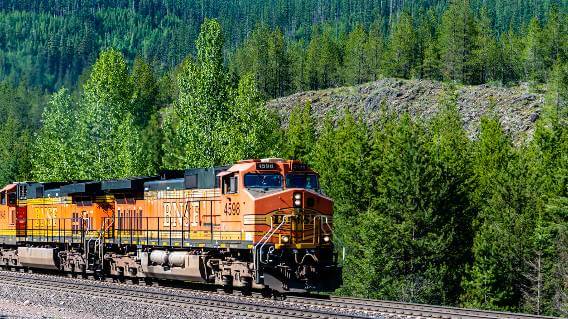Major Section of Libby Asbestos Superfund Cleanup Completed
Asbestos Exposure & BansWritten by Tim Povtak | Edited By Walter Pacheco

Twenty years after being placed on the U.S. Environmental Protection Agency’s National Priorities List, the Libby, Montana, asbestos Superfund site continues its slow but steady climb toward total restoration.
The EPA announced earlier this month that cleanup of another major section had been completed, the fourth of a sprawling, eight-unit project that began in 2002.
Operable Unit 6, as this one is officially called, includes railyards owned and operated by BNSF Railway, one of the largest freight railroads in North America. It also encompasses 41 miles of railroad right-of-way through Libby and adjoining Troy, Montana.
A Superfund designation is defined as a federal public health emergency. This Superfund site is the largest asbestos cleanup project in the U.S. and part of the longest-running manmade environmental disaster in American history.
“This milestone marks half of the operable units being deleted from the National Priorities List, and demonstrates the progress the EPA and our partners have made in the cleanup and restoration of properties in Libby,” EPA Region 8 administrator KC Becker said as part of the announcement.
Asbestos Remediation Ongoing
Contamination of the Libby area stemmed from the mining of vermiculite that began almost 100 years ago. Vermiculite is a naturally occurring mineral once used in building insulation and as a soil conditioner.
The vermiculite and the entire Libby mine, which was bought by W.R. Grace in 1963, was contaminated with a highly toxic type of asbestos called tremolite, which was spread across the entire region through the mining operation and the dust it produced.
Ongoing cleanup in the Libby area has cost federal taxpayers about $600 million, according to various estimates.
In 2021, cleanup completion involved all roadways and major highways in and between Libby and Troy. Restoration of most all commercial and residential properties already has been done.
Contamination Leaves Mesothelioma Legacy
Although the mine was closed in 1990 – after almost 70 years of operation – it left behind a grim legacy and a rural population with disproportionate cases of mesothelioma cancer, which is caused by asbestos exposure. Lincoln County, where Libby is located, has the highest asbestos-related mortality rate in the U.S.
Most of the asbestos is gone now, or buried out of reach, but the aftereffects remain. An estimated 500 people in the area – both miners and residents – have died from asbestos diseases. Thousands more have been sickened through the years.
Libby’s Center for Asbestos Related Disease Clinic remains busy, caring for and monitoring almost 2,500 people, either current or past residents.
Those numbers remain high, even with most asbestos gone, because of the long latency period – between 20 and 60 years – between exposure to the toxic fibers and obvious symptoms of disease.
Libby Restoration Moves Past Halfway Point
Final restoration of three of the remaining four units is almost done and completion announcements are expected to follow soon. Only the unit with the actual mine site will need several more years of work.
Although still involved, the EPA relinquished oversite of the Superfund site to the Montana Department of Environmental Quality in 2019. The two governmental agencies will continue to address contamination concerns throughout the area.
“The deletion of Operable Unit 6 from the National Priorities List is another accomplishment for the Libby Asbestos Superfund site and for Lincoln County,” said Matt Dorrington, construction bureau chief for the department. “It’s always a celebratory day when DEQ and EPA can announce that a portion of a Superfund site is cleaned up.”







